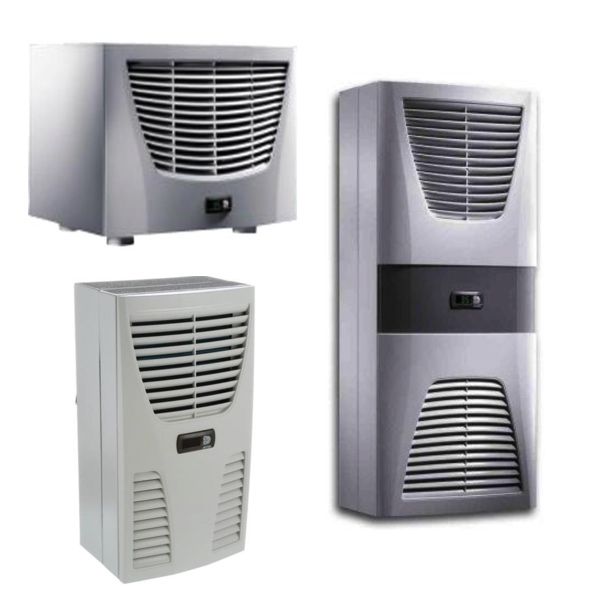
Rittal Enclosure Air Conditioners

Rittal enclosure air conditioners supply an industry-leading climate control solution. The sophisticated design of these cooling units provides cooling output that remains consistent regardless of the global regulatory context—flexibly tuned for either 50 Hz or 60 Hz operation. Energy efficiency is of particular priority in the Rittal enclosure air conditioner. Despite these economizing steps, the units remain staunchly capable of protecting the delicate equipment housed in an enclosure just as well as any Rittal product you'd care to name.
Rittal enclosure air conditioners meet diverse industrial needs that require various types of enclosure condition control. The A1, K, and M1 models are available in stock and provide inexhaustible scalable solutions to any enclosure cooling requirement. If condensate was allowed to build up in the enclosure on interior components, it would lead to corrosion and failure. Fortunately, the five F1 evaporators in the enclosure partition for which these pure conditioners are not generating a cooling current will keep the condition of the enclosure safe from moisture buildup. Apart from rain or vapor, nothing is more potentially damning to an enclosure than accumulated condensate.
Products
FAQs
How can you can quickly and easily find the right Rittal air conditioning solution for your requirements?
You can quickly and easily find the right Rittal air conditioning solution for your requirements by using their online selection tools, consulting with authorized distributors, or leveraging Rittal's software services for tailored recommendations.
Common modifications or accessories that are used to enhance electrical cabinets.
Lighting kits. Lighting kits are often used in outdoor applications. There are many different styles of lighting kits that can be used, but LEDs have become the preferred lighting solution in the past several years.
Pressure switches. Pressure switches operate on a spring and react to the cabinet door opening and closing. They can be used for lights, intrusions alarms and exhaust fans.
Passive air vents. Passive air vents allow natural air circulation to flow through a cabinet providing proper ventilation.
Enclosure fans. Enclosure air fans are used when more ventilation is required. The size of the fan will depend on the size of the enclosure as well as the amount of air that needs to be circulated.
Air conditioners. Air conditioners are used when ambient air circulation is inadequate to cool the cabinet. The air conditioner size will depend on the enclosure size, ambient air temperature and heat generated within the cabinet.
Heaters. Heaters are used when a cabinet is located in areas that may be exposed to cold temperatures.
Locking mechanisms. Locking mechanisms are used to secure cabinets.
Conduit hole seals. Conduit hole seals are used on cabinets that have holes that need to be plugged after conduit has been removed.

